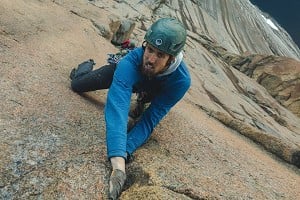
The team of Olly Sanders, Dave Rudkin and Lee Roberts, left U.K on 24th July and three days and four plane rides later we arrived in Upernavik. We were met by Nikolas Sorenson our local contact who helped us enormously over our stay. Our flight was delayed due to mechanical problems and we finally got our boat drop off on the 30th to end of the fjord at the South side Kangerlussuaq island, which was around 30km from Upernavik. The camp-site was perfect, sheltered from most wind directions with good water and an abundant supply of driftwood, there was also a lot of plastic which we cleaned up and burnt. This was in an attempt to leave minimal human impact, all human waste was disposed of in the sea and tissue paper was burned. In fact, the camp was left in a much cleaner state than our arrival.
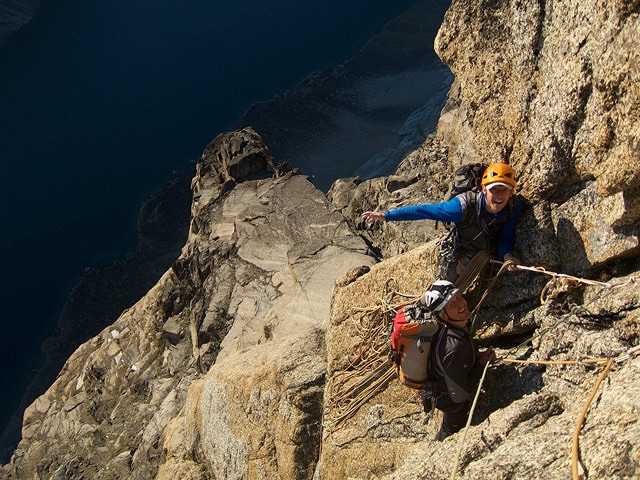
We hired a rifle from our host as a safety precaution should we come across any bears or rabid foxes. Bullets were purchased from the local supermarket and we carried out a short rifle training session once camp was set up. During this we realized the gun to be defective and quite dangerous to use. Fortunately we didn't need to use the gun, the only wildlife we came across were Arctic foxes which were very hospitable.
Our main objective was the large cliffs on the left side of the fjord looking out from the beach and we spent the next day going for a closer look and although the journey was short in distance the boulder fields made it awkward and slow. We spotted a crack system, but decided to return for a closer look.
The next day we went climbing on a cliff nearer the camp, that Olly had climbed on a previous line and put up six pitch route with a stunning third pitch, this was named Heroes of Hotness and was graded E3 6a. The team returned to the main objective and three pitches of climbing put us on top of the obvious pinnacle and gave us a closer look at the crack system which looked very good. Lee aided a pitch at C1 and fixed a line.
This pitch would go free at E6 we thought. We returned to camp to get more gear for an attempt and we had decided to haul gear as well. Nickolaj had no sat phone so we were relying on pressure readings and observations to predict weather, but although it was a little cloudy the next day, we decided to go for it.
We got to our high point and Dave then led the hardest pitch at E5 6b the climbing and rock were of excellent quality...
We got to our high point and Dave then led the hardest pitch at E5 6b. The climbing and rock were of excellent quality and this continued for the next few pitches including a good E3 pitch that Lee led. The angle eased slightly and although the climbing was still good, care had to be taken with the many loose blocks. During the day the cloud had thickened and the wind increased, we were now seconding with a rucksack and a haul bag.
We arrived at a ledge and at this point it was raining, we had waterproofs but no shelter or any bivvy kit and we decided to try and sit it out, the rain and wind increased and we were now getting wet, with no idea how long the rain would last and how long it would take to dry out, we had a difficult choice.
We were over 400m on the route abseil retreat would be difficult and dangerous, but if we left if too long we could be very cold and make decision making difficult, so we decided to go down . The next five hours were terrifying, we trashed our static very early so now we had to abseil on our 60m which would take longer and pulling the ropes was gripping. At last using parts of the remaining 80m static we got to the bottom, having left all the ropes we had in place on the bottom part of the route. It had been a 24 hour day and we go back to the camp at 9 in the morning. Dave did a great job sorting out a lot of the abseils.
The weather was being very unpredictable on previous trips it had been a lot more stable with manly good clear days after any rain. We decided to walk to one of the high points on the island to see if with line of sight with Upernavik we could get a phone signal. This worked and we were able to get a weather report, it was mixed with only a few clear days before more bad weather.
The next plan was to go as lightweight as possible, climbing with small sacks and trying to make best use of a weather window. The team were all fairly subdued, just wanting to try and finish the route that was staring at us all the time from the camp. We ascended the ropes as carefully as we could getting belayed when possible and not damaging the dynamic ropes, we dumped the static as it was now damaged in many places and made it back to our high point block leading. Olly led the pitch from the ledge at E3 and Lee took over a few pitches later to lead to the top with some great climbing on the final headwall around E2 climbing that was good rock and gear. The route was finished in a twelve hour push and the team were rewarded with stunning views from the top and a memorable walk down.
The route was named Drowning in a Sea of Light E5 6b, C1 20 pitches 800m apart from pitch 4 all pitches were climbed free and onsight with no bolts or pegs.
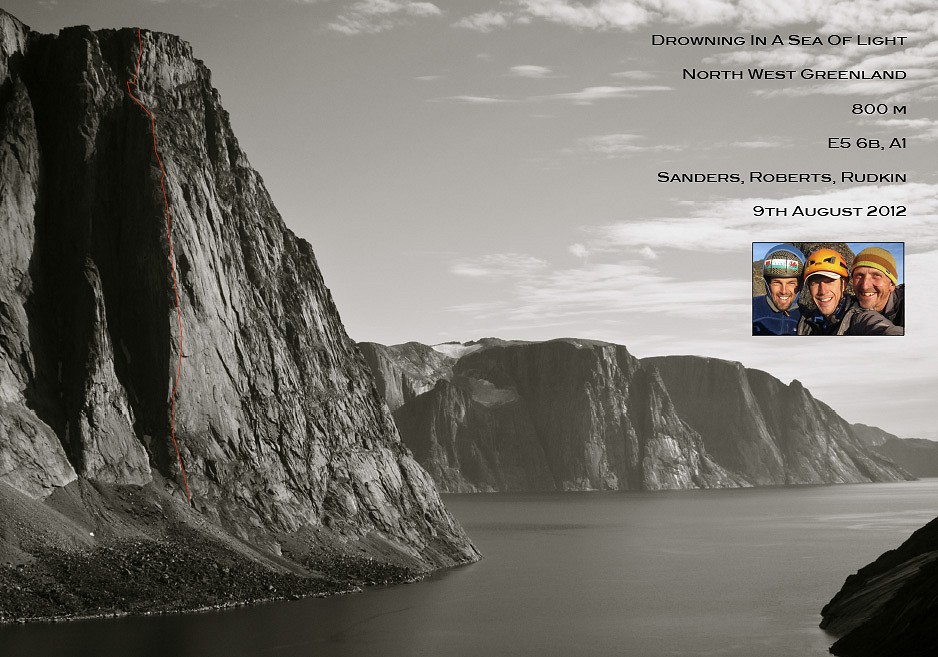
The rest of our stay was marked with very mixed weather, lots of unseasonable rain, but the team did manage one more 6 pitch route Called Palmolive, E1 5a, on the same cliff as the first route.
We arranged to get picked up a few days early as we were worried about a boat pickup in poor weather and spent the last few days sorting out freight in Upernavik before returning home
The team would like to thank Welsh Sports Association, theBMC. Alpine Club and Gino Watkins Fund for help with funding and Mountain Equipment for Clothing.

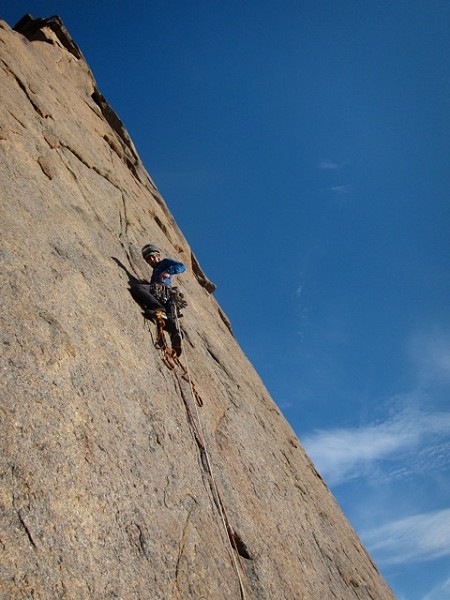
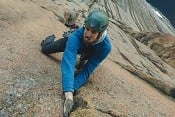












Comments